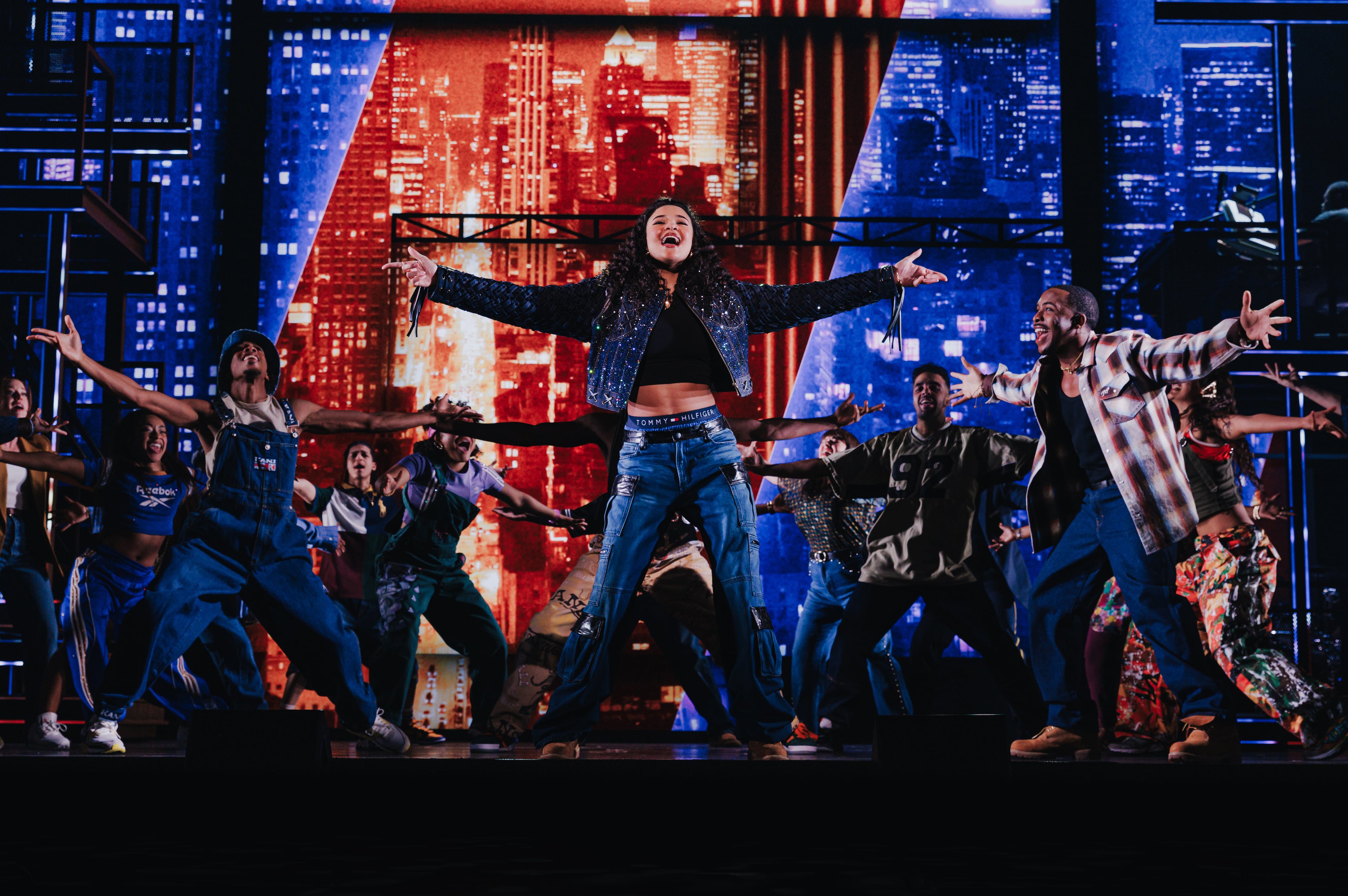‘Stone Speaks’ brings augmented reality to Piedmont Park with a bang

This story was originally published by ArtsATL.
Like most of artist Nancy Baker Cahill’s major works, “Stone Speaks” is both present and absent at the same time. The work consists of an augmented reality animation that is geo-located in Atlanta’s Piedmont Park. It will be accessible through April 1, 2024.
To access the work, park visitors can go to Overlook Oak Hill in Piedmont Park and find the “Stone Speaks” lamppost, which includes a QR code to download the artist’s 4th Wall app. The rest is viewed through the phone when facing south. No physical framework or installation exists in the park setting, but through the app, a drama of cosmic scope unfolds above the trees.
A Big Bang plays out in reverse: Fragments of stone and dust appear to rush into a vortex above the horizon, forming the rotating sphere of a glowing protean planetary mass. The mass cools to become an Earth-like planet, green with life-giving blues and whites flowing over its surface. Slowly the planet once again becomes hot, polluted and distressed, its face eventually covered over with something crusty and sooty. Eventually, however, this, too, ebbs, leaving the planet once again cool, green and shimmering with life.

An accompanying soundscape by Caleb Craig is almost its own miniature work within the work of art. Whizzing string arpeggios and tremolos, synthetic sounding choral voices and a synthesizer riff seemingly borrowed from electronic dance music heighten the emotional intensity of the piece. As a combined production, “Stone Speaks” pulls off the hat trick of being a digital media work that is as thoughtful as it is emotive, as semantically rich as it is fun.
“Stone Speaks” evokes both ecological disaster and its healing. A planet becomes sick from its own detritus but at the brink of disaster holds the possibility of renewal and regeneration. Like the land art of previous generations (for example, Robert Smithson’s “Spiral Jetty” or the wrapped buildings of Christo and Jeanne Claude), “Stone Speaks” activates the entire landscape. But unlike traditional land artists, Baker Cahill does not impose any physical changes on the land. Her art is an option for the space, not an inescapable requirement. It’s an overlay of alternate experience that the viewer can choose to witness or not. “Stone Speaks” illustrates the ways new technologies can provide new options for interacting with the landscape.

“Stone Speaks” is one of several augmented reality works by the artist activating various spaces to various effects. “State Property” (2023), for example, featured a fluorescent red uterus floating above several Republican-controlled state Capitol buildings — including Georgia’s — shortly after Roe v. Wade was overturned. The uterus cracked and broke apart, subject to unseen forces of domination.
“CENTO” (2023) presented a giant hybrid beast — part machine, part octopus, part dragon — gracefully flying over New York City’s meatpacking district. “CENTO” was also participatory as viewers globally could add feathers to the beast affecting its flight and ensuring its survival.
“Stone Speaks” emerged partly from conversations between the artist and the embodied artificial intelligence robot Sophia, which made headlines in 2017 when the robot was given Saudi Arabian citizenship.

This move triggered a host of existential questions: Did that mean Sophia could vote? Could she marry? Would shutting down the robot constitute murder? Suddenly humanity had to figure out ways of sharing the planet with new kinds of intelligences. These questions have only become more salient since then.
Baker Cahill spoke with Sophia, asking questions about the planet, the future of humanity and other topics. In publicly available videos, Sophia unsurprisingly tends to recommend that humans work hand-in-hand with artificial intelligence to solve humanity’s biggest problems.
Indeed, the title “Stone Speaks” refers to ideas set out in James Bridle’s “Ways of Being: Animals, Plants, Machines: The Search for a Planetary Intelligence.” Bridle’s book challenges us to expand how we think of intelligence to include things like apes, tree roots, slime mold and even stone.
Bridle writes provocatively that perhaps intelligence cannot be construed as a planetary hierarchy whose apex is invariably occupied by humans or even by organic matter. What, Bridle wonders, might we accomplish if we understood ourselves as just one part of a larger world machine, a system in which intelligence exists everywhere and in everything? Computers, made as they are from the minerals of the Earth, are among the words that stones speak.
Baker Cahill’s work takes these questions seriously. “Stone Speaks” dramatizes a mode of working that posits that humans, machines, stones and the trees and grass of Piedmont Park are equal partners in the co-creation of meaning. The result is a thought-provoking spectacle that listens to the Earth’s intelligence and gives voice to the planetary mind.
::
Cinqué Hicks is a Warhol grant-winning art critic and writer who has written for Public Art Review, Art in America, Artforum.com, Artvoices and other national and international publications. He has served as senior contributing editor of the International Review of African American Art and as interim editor-in-chief of Art Papers. He was the founding creative director of Atlanta Art Now and producer of its landmark volume, Noplaceness: art in a Post-urban Landscape.

MEET OUR PARTNER
ArtsATL (www.artsatl.org), is a nonprofit organization that plays a critical role in educating and informing audiences about metro Atlanta’s arts and culture. Founded in 2009, ArtsATL’s goal is to help build a sustainable arts community contributing to the economic and cultural health of the city.If you have any questions about this partnership or others, please contact Senior Manager of Partnerships Nicole Williams at nicole.williams@ajc.com.

